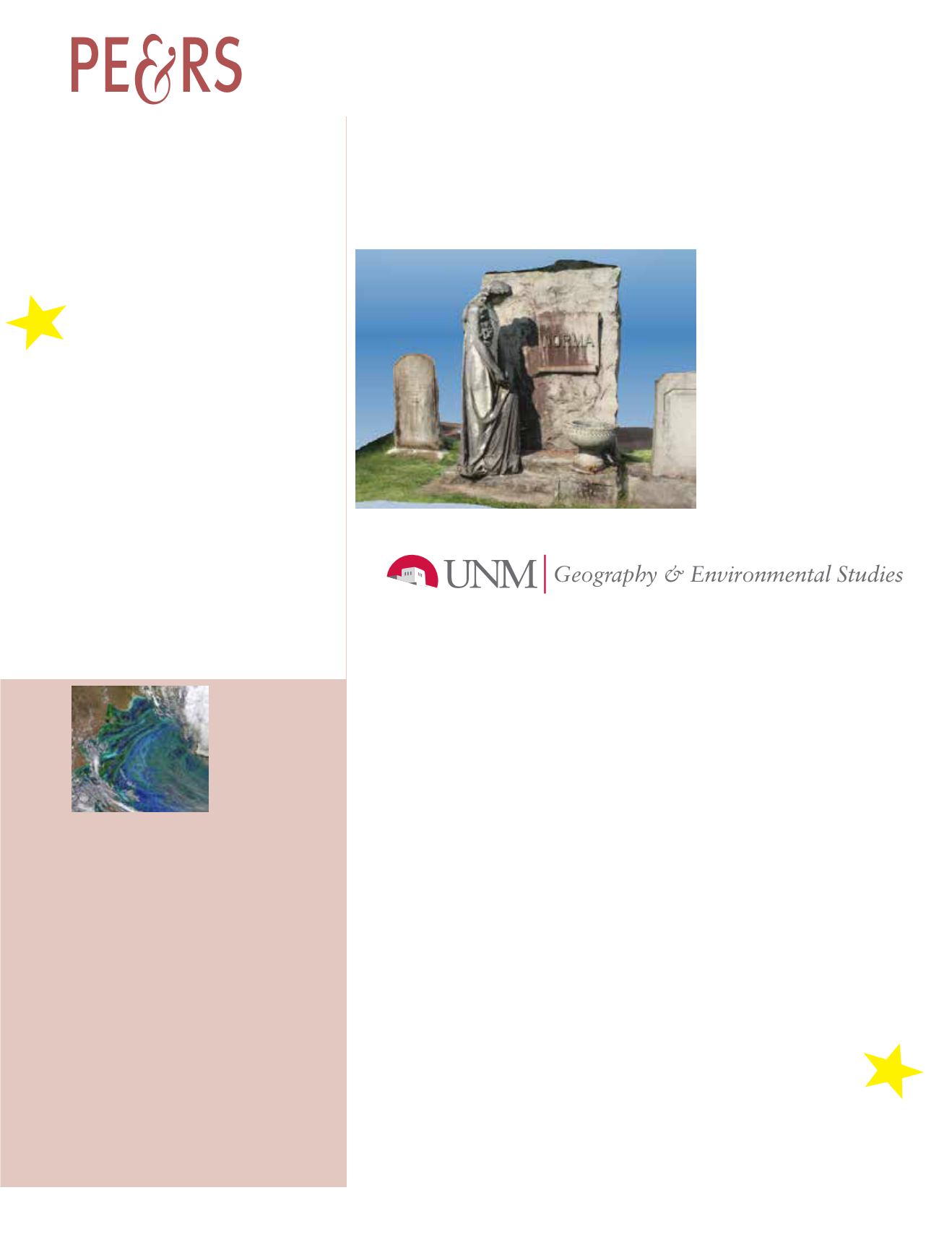
PHOTOGRAMMETRIC ENGINEERING & REMOTE SENSING
January 2015
3
PHOTOGRAMME TR I C ENG I NE ER I NG & REMOT E SENS I NG
The official journal for imaging and geospatial information science and technology
January 2015 Volume 81 Number 1
H I GHL I GHT ART I C L E
Nancy K. O’Hare, Brandon P. Adams, Marguerite Madden, and Thomas R. Jordan
PROF ESS I ONAL I NS I GHT—AN I NT ERV I EW
PE ER - REV I EWED ART I C L ES
Yonghua Jiang, Guo Zhang, Deren Li, Xinming Tang, Wenchao Huang,
and
Litao Li
A method by which the positioning accuracy of YG-12 high-resolution panchromatic
images using GCPs is significantly improved by eliminating inaccuracies caused by
interior distortions and serious time-synchronization errors.
Michael Campbell, Russell G. Congalton, Joel Hartter,
and
Mark Ducey
compare a number of well-established techniques with some new methods using a two-
county area in northeastern Oregon as a case study.
Han Hu, Qing Zhu, Zhiqiang Du, Yeting Zhang,
and
Yulin Ding
A reliable feature point matching method for oblique aerial images using the spatial
relationships of the point correspondences to remove outliers.
Xiaodong Li, Yun Du,
and
Feng Ling
A land cover map updating method that involves the use of a current coarse-resolution
remotely sensed image and a previous fine-resolution land cover map to update fine-
resolution land cover maps.
Yichun Xie, Anbing Zhang,
and
William Welsh
Standard procedures for integrating NAIP (National Agriculture Imagery Program) and
Landsat images with multiple processes of ground truthing, image classification and
validation.
APPLICATIONS
PAPER
NEW!
COLUMNS
ANNOUNCEMENTS
DEPARTMENTS
Late spring and summer
weather brings blooms of
color to the Atlantic Ocean
off of South America. The
Patagonian Shelf Break is
a biologically rich patch of
ocean where airborne dust
from the land, iron-rich
currents from the south,
and upwelling currents
from the depths provide a bounty of nutrients for the grass
of the sea
. In turn, those floating sunlight
harvesters become food for some of the
in
the world.
The
(VIIRS)
on
captured this false-color view of
phytoplankton-rich waters off of Argentina on December
2, 2014. Scientists in
used
three wavelengths (671, 551, and 443 nanometers) of light
to highlight different plankton communities in the water.
Bands of color not only reveal the location of plankton, but
also the dynamic eddies and currents that carry them.
The aquamarine stripes and swirls are
likely coccolithophores, a type of phytoplankton with
microscopic calcite shells that can give water a chalky
color. The various shades of green are probably a mix of
dinoflagellates, and other species.
Blooms occur off of Patagonia because warmer, saltier
waters from the subtropics meet the colder, fresher waters
flowing up from the south. These currents collide along
what oceanographers call a
a turbulent
area of vertical and horizontal mixing on the edge of the
continental shelf..
NASA images by Norman Kuring, NASA’s
For more information, visit
.
nasa.gov/IOTD/view.php?id=84870


